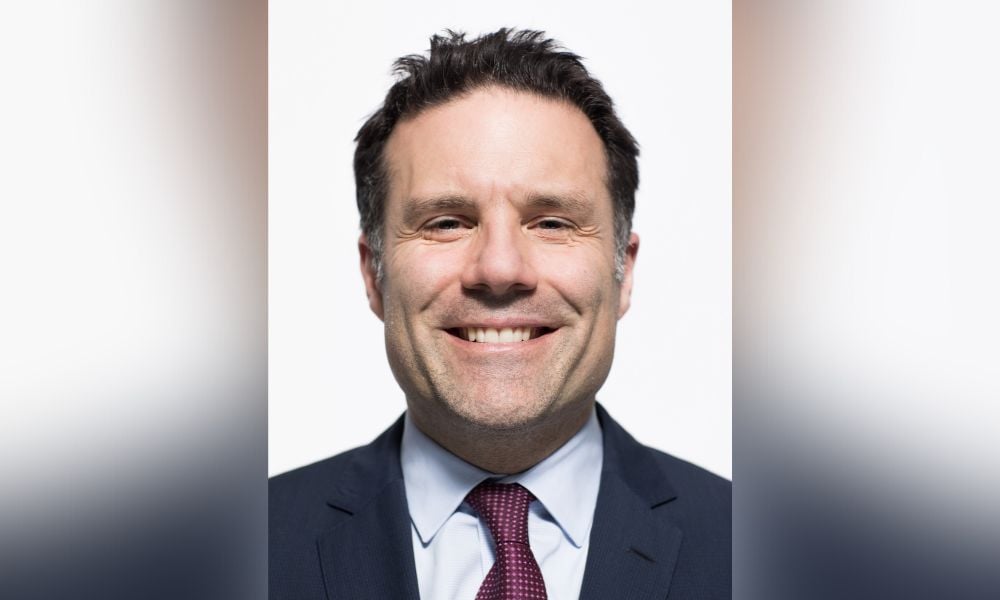Patrick Blais, head of the Fundamental Equity Team at Manulife Investment Management, explains the key factors behind fund's performance

Sponsored by Manulife Investment Management, as of November 2022
For the average investor, 2022 has been a year of fear and worry as an unprecedented combination of rising energy prices, inflation, and interest rates have triggered a major market downturn.
Markets have been pummeled as central banks continue to hike interest rates to try to tame inflation, pushing stocks lower regardless of their fundamentals. With many scared off to the sidelines, we believe it is an opportune time for disciplined, value investors to add holdings in solid, cash-creating companies.
“When there are broad selloffs and you have done your work, you could find gems, and you may find good investments,” says Patrick Blais, Senior Portfolio Manager at Manulife Investment Management and head of the Fundamental Equity Team. “We were prepared with an exhaustive list of potential buys and as they have fallen, we've taken advantage of the stock prices to step in.”
Blais and his team manage the Manulife Fundamental Balanced Class, which has a focus – and track record – of delivering long-term outperformance for investors with strong downside protection.
“We're quite proud of the risk-return profile we've built with this fund, and certainly been vindicated by how we've out preformed the peer group as well as the benchmark over 1, 3, and 5 year time periods.”
Cash is king
The Fundamental Equity Team adheres to a time-tested investment philosophy: follow the money, or more accurately, the cash flow. The team ruthlessly evaluates a potential investment’s ability to generate cash in good times and bad as well as possible worst-case scenarios.
“We focus on the real cash that the company generates, the real cash that comes to shareholders,” says Blais. “Understanding that cash leads us to quality businesses that have sustainable fundamentals and are undervalued based on our cash methodology.”
This approach utilized by the Manulife Fundamental Balanced Class is painstaking, slow and deliberate. The results, however, are hard to argue with. Over the past five years, the fund has matched the performance of the S&P TSX index with one-half the volatility as measured by the fund's maximum drawdown: -10.8 vs -22.3, a remarkable performance for a balanced fund.
That translates into digging into the inner workings of companies to create a better sense of a company’s money-generating ability than its board of directors. “To get to understanding of those real cash flows, which we call tangible cash flows, we will typically have to restate 10 years of financial statements and really parse through where the cash is coming from,” says Blais. “We do put an emphasis on avoiding downside risks. So, we stress test our potential investments.”
That focus on quality names with sustainable cash flows means a tendency to invest in companies with robust balance sheets and little debt. “We tend to avoid highly leveraged companies.”
The balanced fund is not limited to Canadian equities and currently about 50 per cent of its stock holdings are foreign companies that meet its strict requirements for cash generation and resiliency.
Balanced, but prepared to pivot
The balanced fund holds a mix of equities, bonds and cash which will vary depending on the equity team’s assessment of factors such as valuations for stocks and bonds, the market cycle and risk-reward calculations. The equity-heavy fund typically holds between mid-60s equities up to mid-70s percentages, depending on the market.
In this current market selloff, the investment team is a buyer. “We will typically allocate more towards equities in more broad market sell offs, if we can find the opportunities,” says Blais. “Whereas if the market becomes overvalued, we aren't afraid to bring down our equity weight to the mid-60s.”
That risk-reward mindset carries over to the fixed income segment of the fund where until recently, bonds offered plenty of risk for meagre rewards. Given an environment of persistent low rates with low inflation, holding a high percentage of bonds was too risky, so the fund held high cash positions to guard against the downside risks of higher inflation and/or rising interest rates.
“Fast forward to today, and we've actually reversed that,” says Blais. “We actually have around 25 per cent allocated to bonds and five per cent to cash.”
The future is uncertain, but discipline remains
Pessimism continues to reign in markets as investors worry about further rate increases as central banks try to push inflation back down to acceptable levels.
That has Blais and his team watchful of subtle market signals, while the focus remains on opportunities to add value while minimizing potential downside risks.
“I think it's what everybody's talking about,” says Blais. “It's really the persistence of inflation and how much central banks will continue to tighten going forward? To be honest, we don't have the answer. What we do know is, it is a risk and it's reflected in our stock selection where we try to put as much valuation on our side, as well as focusing on companies that are of high quality and have resilient operations.”
Investor nervousness and anxiety continues to create appealing valuations for companies that Manulife Investment Management has long coveted - those with rock solid cash flows and the ability to ride out and even prosper from a lengthy economic downturn. “Definitely we share the concerns of the market but are taking advantage of valuations that have come our way,” the equity head concludes.
The views expressed are those of Manulife Investment Management and are subject to change as market and other conditions warrant. Information about a portfolio's holdings, asset allocation, or country diversification is historical and is no indication of future portfolio composition, which will vary. Please read the fund facts as well as the prospectus before investing. The indicated rates of return are the historical annual compounded total returns including changes in unit value and reinvestment of all distributions and does not take into account sales, redemption, distribution or optional charges or income taxes payable by any securityholder that would have reduced returns. Mutual funds are not guaranteed, their values change frequently and past performance may not be repeated. Past performance is not indicative of further returns. Certain research and information about specific holdings in the Fund, including any opinion, is based on various sources believed to be reliable. All overviews and commentary are for information purposes only and are not intended to provide specific financial, investment, tax, legal, accounting or other advice and should not be relied upon in that regard. This material was prepared solely for informational purposes, does not constitute an offer or an invitation by or on behalf of Manulife Investment Management to any person to buy or sell any security and is no indication of trading intent in any fund or account managed by Manulife Investment Management.
Manulife Funds are managed by Manulife Investment Management Limited (formerly named Manulife Asset Management Limited). Manulife Investment Management is a trade name of Manulife Investment Management Limited.
Commissions, trailing commissions, management fees and expenses all may be associated with mutual fund investments. Please read the fund facts as well as the prospectus before investing. Mutual funds are not guaranteed, their values change frequently, and past performance may not be repeated.
© 2022 Manulife Investment Management. All rights reserved. Manulife Investment Management, the Stylized M Design, and Manulife Investment Management & Stylized M Design are trademarks of The Manufacturers Life Insurance Company and are used by it, and by its affiliates under license.



